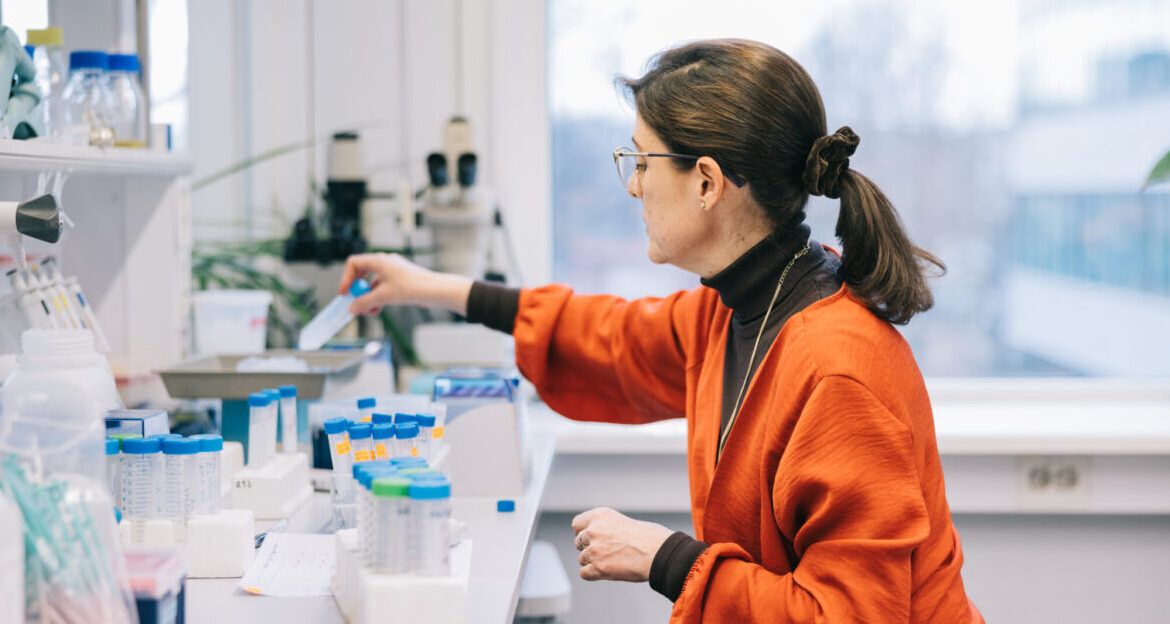In another year of record-breaking events caused by climate change, it is imperative to think about sustainability for all aspects of our lives and work. As scientists, there are a number of changes that we can make to make sure we develop more sustainable practices in our lab.
In this article, I am giving practical tips that are easy and quick to implement, and I am also outlining how you can develop a longer-term strategy to become a circular, carbon neutral and climate-adaptive lab. If your university does not have an official policy yet to reach sustainability objectives and contribute to sustainable development, your lab can become the first to lead the way.
Day-to-day practices
Let’s start by looking at several practical changes that you can implement easily. Here are a few simple habits you can develop to reduce the energy consumption in the lab and reduce waste generation:
- Turn off lab equipment: At home, you wouldn’t leave the lights on when you leave. In lab, make sure you always switch off all the equipment that you are not using to reduce energy consumption.
- Use energy-saving modes: If you cannot switch off your equipment, check if you can activate an energy-saving mode.
- Turn off computers at night: Make it a habit to switch off your computer every evening when you leave the office. You do not need to return to a computer with 47 tabs open in the morning. If your computer needs to run simulations overnight, make sure you switch off the screen.
- Manage your freezers: Check the status of your freezers. If a lot of ice has accumulated, make sure to unfreeze, clean, and restart your freezer. You may also want to check the samples in your freezers: which of these are of ongoing projects, and which are simply forgotten remainders of past research?
- Conserve water: Check how much water your setups use. Consider the use of low-flow faucets, timers, and water recycling systems to reduce the amount of fresh drinking water that you use in the lab.
- Reduce use of paper: Another resource you can reduce is paper. If you usually print out everything, make to reading digitally. I personally find that reading on a tablet or e-reader gives a similar reading experience as reading on paper, and have significantly reduced the number of documents that I print out.
- Reuse gloves: Can you wash and reduce your plastic gloves a few times to reduce the amount of plastic waste you generate in the lab? If you are not working with chemicals or contaminants that require you to trash your gloves after use, you may want to consider reusing your gloves.
- Reduce single-use plastics: Which changes can you make to reduce single-use plastics in the lab? Can you swap single-use plastic elements for equipment in glass or stainless steel that you can sterilize and reuse?
- Separate waste and recycle: Labs generate a fair amount of waste. Make sure you have a setup with recycling bins for the trash so that you can separate the various sources of waste.
- Reuse chemicals: Where you can do so in a safe manner, check how you can collect and reuse certain chemicals from your experiments.
- Practice proper chemical disposal: Avoid environmental contamination by practising proper disposal of harmful chemical. Make sure you also check water runoff in your experiments, to avoid diluted harmful chemicals entering the waste water. Where necessary, make sure you install filters.
- Use biodegradable cleaning products: Switch from your standard cleaning products to wipe clean benches and mop the floor in the lab to biodegradable alternatives. You can also change the soap in the lab to an environmentally friendly alternative – all that washing of hands every day does add up!
Long-term vision for your lab
Besides making simple changes by switching off equipment, separating waste, and making a few eco-friendly swaps, it is also important to think strategically. How will your lab become circular, carbon-neutral and climate-adaptive? You could hire the help of an external consultant, or reach out to colleagues in a different department who are specialized in sustainability. Here is a step-by-step plan to answer this question:
- Recollect information: First, you need to gather all relevant information from your lab, regarding energy use, transportation, waste management, and more. You can find an example of my university from 2022 here.
- Calculate your lab’s carbon footprint: By analysing the information collected in the previous step, you can develop an overview of your lab’s total carbon footprint, and see which areas contribute most to the overall carbon footprint. You can find an example of such an analysis of my university from 2023 here.
- Identify the main points to improve: Once you have compiled and analysed the data, you will be able to identify the main contributors to your lab’s carbon footprint. Is it your lab equipment using a lot of energy? Think of a plan to modernize your equipment and have more energy-efficient equipment, as well as find ways to use renewable energy – either by directly installing solutions such a solar panels on campus or by switching energy providers to a certified green provider. Is transportation the main issue? Discuss within your lab which solutions you can think of to make your commute more sustainable.
- Assess opportunities for circularity: What are the main waste streams, and how can you reuse these resources? With whom can you collaborate within your university? Which lab generates “waste” that is potentially a valuable element for your research? Which changes in research lines can you make to work more with circular materials?
- Implement a sustainability tracking, assessment and rating system: If you want to formalize your steps to develop a sustainable lab, you can use the STARS methodology of AASHE (the American Association for Sustainability in Higher Education) to track and assess your lab and university for sustainability and obtain a rating.
- Discuss with all stakeholders: When it comes to changing to more sustainable practices, it is important to involve everyone in the discussion: lab users, professors, administrators, students, and other stakeholders such as representatives from your main funding bodies. It is important that your roadmap for a sustainable lab is centred on a process of co-creation. Your path forward should be something everybody is excited about and should align with your lab’s core values, mission, and vision. By bringing together the whole community of the lab, and having an open discussion on how you want to contribute to a better tomorrow, you will come to a plan that everybody identifies with, and that does not feel like a rule imposed from above.
- Assess and course-correct: Your lab will not become carbon-neutral, circular, and climate-adaptive overnight. If you have a clear objective (such as the year by which you want to achieve this outcome), you will need to take the time to check your data frequently. An annual assessment cycle is often used: you will collect the data, see where you have improved and celebrate that success, and see where you are lagging and identify how to course-correct.
Conclusion
In this article, you learned about easy day-to-day changes that you can make to develop more sustainable practices in the lab, related to reducing energy consumption, waste generation, and practising reduction of your usage of resources. At the same time, we also looked at how you can generate a roadmap to make major changes and achieve sustainability goals in your lab over the next years.





How can a lab begin developing a long-term strategy to achieve circularity, carbon neutrality, and climate adaptation?